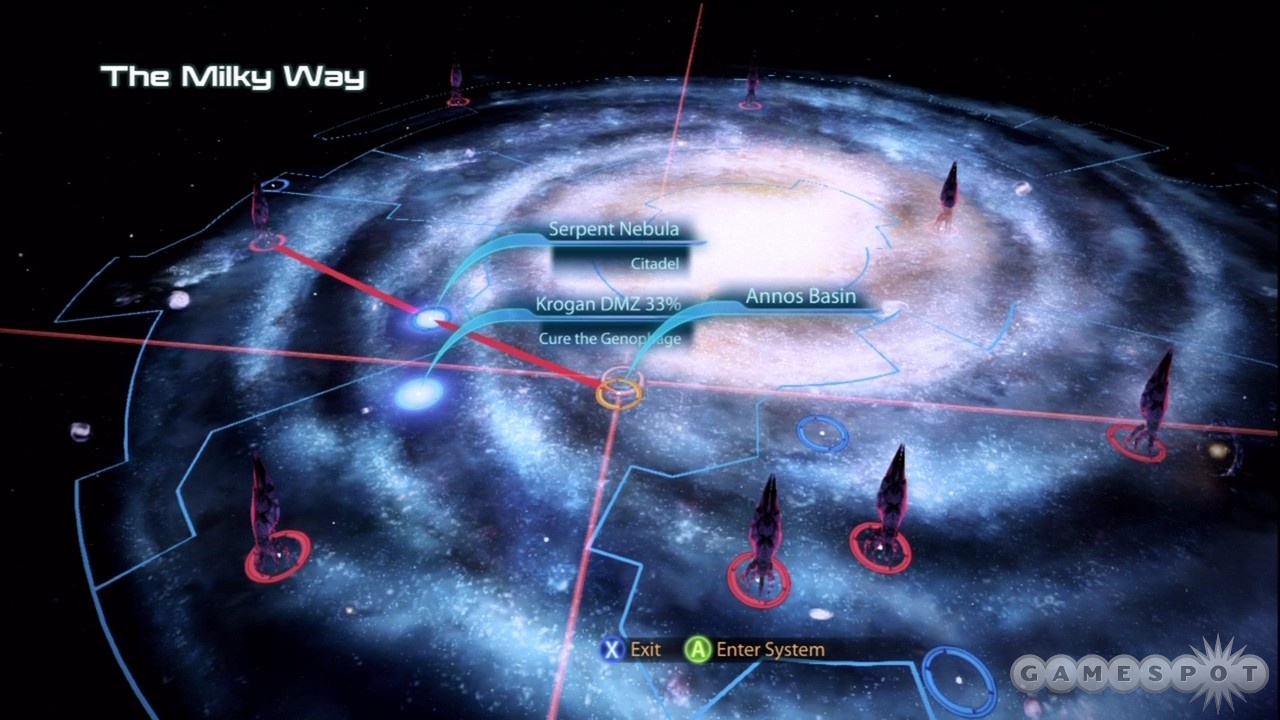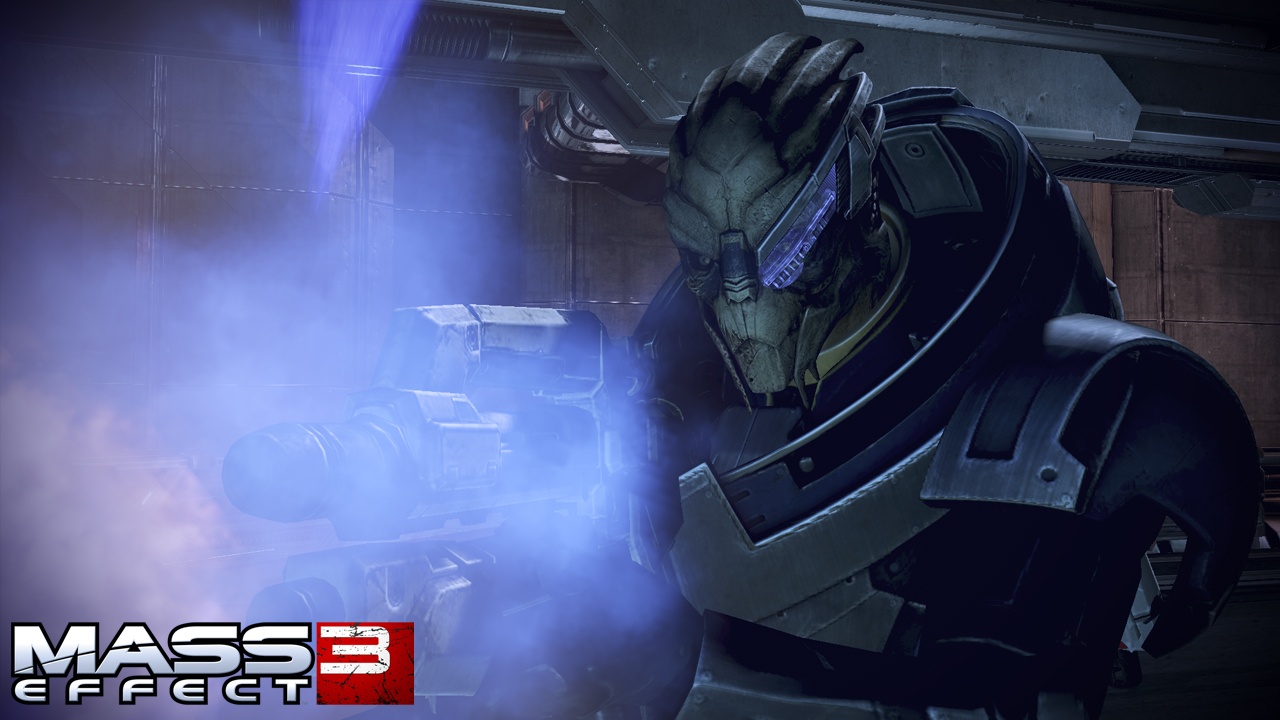How Mass Effect: Legendary Edition Changes Galactic Readiness System
The Galaxy at War system in Mass Effect 3 linked together single-player, multiplayer, and mobile apps, but it's all different now.
The three original Mass Effect games influenced each other as part of one long, expansive story, and that is most true with Mass Effect: Legendary Edition, as BioWare has implemented changes that make your choices matter even more between games. It all culminates in Mass Effect 3, where everything you do in Mass Effect 1 and 2 matters greatly to what happens at the end of the game, thanks to a change to the Mass Effect 3's Galaxy at War and Galactic Readiness system.
When it was first released, Mass Effect 3 took into account actions you made in both its multiplayer mode and in mobile apps, which affected the strength of the army you raise to battle the Reapers in the single-player campaign. But that was way back in 2013; multiplayer isn't part of Legendary Edition, and the apps and other outside elements are no longer a part of the game. So BioWare has changed the Galaxy at War system significantly, deleting the part that was tied to multiplayer and changing the math a bit to determine your overall military strength.
Mass Effect: Legendary Edition's take on Mass Effect 3 might be a little confusing for returning players who expect lots of moving parts, but it's actually been simplified. Below is everything you need to know about Galaxy at War, the Galactic Readiness system, war assets, and everything else related to the ending of Mass Effect 3, and be sure to check out the rest of the changes to the original games in Mass Effect: Legendary Edition you need to know about.
War Assets And Galactic Readiness

Mass Effect 3 is all about increasing the strength of the galaxy's military might so that you can take the fight to the Reapers. Throughout the game, you and your crew fly around the galaxy, gathering forces, people, ships, and allies so that when you finally return to Earth, you'll be at the greatest possible strength. To do that, you need to raise points called "war assets."
War assets are the actual items and people you find out in the galaxy as you work to help humanity repel the Reapers. Each war asset is logged at the Normandy's War Table interface, and equates to a number of points. You need a minimum number of war asset points to hit Mass Effect 3's endgame, but the more you can bank, the better your chances against the Reapers and the better the ending possibilities you open up. You gain war assets by completing missions throughout the game--both main missions and side missions. The point total for your war assets is defined as Total Military Strength.
In the original release, there was a second factor called Galactic Readiness, which was tied to multiplayer, mobile apps, and the like. Galactic Readiness helped determine how effective your war assets were, adjusting your point score after the fact. From what we can tell, however, Galactic Readiness has been removed as a determinant in how Mass Effect: Legendary Edition judges your Total Military Strength in Mass Effect 3. Instead, Mass Effect: Legendary Edition factors in what you've done in past games.
How Galaxy At War Used To Work
In the original Mass Effect 3 release, Galaxy at War linked together multiplayer, the mobile game Mass Effect Infiltrator, and other transmedia offerings. The idea was that you could get more war assets by playing other modes and interacting with other elements, but all those things helped the key system of Galaxy at War: Galactic Readiness. It was presented as a map of the galaxy that was divided into sectors. Each sector carried a percentage ranging from 50% to 100%, defining that area's readiness to deal with the Reapers.
Taking part in Mass Effect 3 multiplayer and interacting with its apps and other systems allowed you to increase the Galactic Readiness of different segments of the galaxy. That was pretty essential--the lower the readiness of an area, the weaker its war assets were. If the readiness of a sector fell to 50% (its lowest point), then the score for its war assets would be cut in half. Therefore, you wanted to raise the Galactic Readiness score as high as you possibly could in all areas, so that you got the most out of all the war assets you gathered by completing main and side missions throughout Mass Effect 3.
This was all displayed at the Normandy's War Table interface. All your war assets were shown there, and their points totaled up to equal your Total Military Strength. The table then factored in Galactic Readiness, a percentage ranging from 50% to 100%, depending on how much effort you'd put in with multiplayer and the other elements mentioned to raise the readiness of different galactic sectors. Your Total Military Strength was multiplied by your Galactic Readiness to reach your Effective Military Strength, the true measure of how powerful your forces against the Reapers would be. If Galactic Readiness was 100%, your Effective Military Strength would be the same as your Total Military Strength, because you were getting the most out of all your assets. If it was all the way down to 50%, your Effective Military Strength would be half your Total Military Strength. Thus, it paid to play multiplayer matches and use the mobile apps to engage with Mass Effect 3.
How Galaxy at War Works Now

BioWare previously said that Galactic Readiness would remain a part of the game, but it doesn't look like that's really the case. There's no Readiness at the Normandy War Table, and where Mass Effect 3 originally presented your Effective Military Strength as the final score measuring how strong your forces were against the Reapers, it now only displays Total Military Strength on the table. Effectively, in Mass Effect: Legendary Edition, the Galaxy at War system is highly simplified. Just play missions in the game to gain war assets and raise your Total Military Strength number; no extra math required.
However, there is a little more to your Total Military Strength number than you might realize at first glance. Now, the system takes into account all your choices from Mass Effect 1 and Mass Effect 2. Mass Effect: Legendary Edition makes note of how you completed missions and interacted with characters in past games, so when you create allies, gain assets, and make friends, that translates into war assets. Therefore, it pays to play through Mass Effect 1 and 2 and carry your saved games forward to Mass Effect 3--the more you play, the higher your Total Military Strength will be at the start of the game. Because of those additions, you should be able to complete fewer side missions in Mass Effect 3, if you should so choose, with the war assets you gain from the first two games making up the difference in points.
On the other hand, if you jump straight to Mass Effect 3, you'll put yourself at something of a disadvantage. Since you won't have Mass Effect 1 and 2 to boost your Total Military Strength, you'll have to make it up purely in Mass Effect 3. In order to boost your point numbers in Mass Effect 3, according to BioWare, you'll have to complete as many side missions you can--all of them, in fact, to reach maximum Total Military Effectiveness.
So on the plus side, Galaxy at War has been streamlined significantly with the removal of mobile apps and multiplayer, making the system much easier to understand. On the other hand, your best bet is to play through the entire Mass Effect: Legendary Edition on a single file, in order to get the maximum Total Military Strength points, the best possible scenario for taking on the Reapers, and the game's best endings. And that's probably going to take a bit.
Got a news tip or want to contact us directly? Email news@gamespot.com
Join the conversation